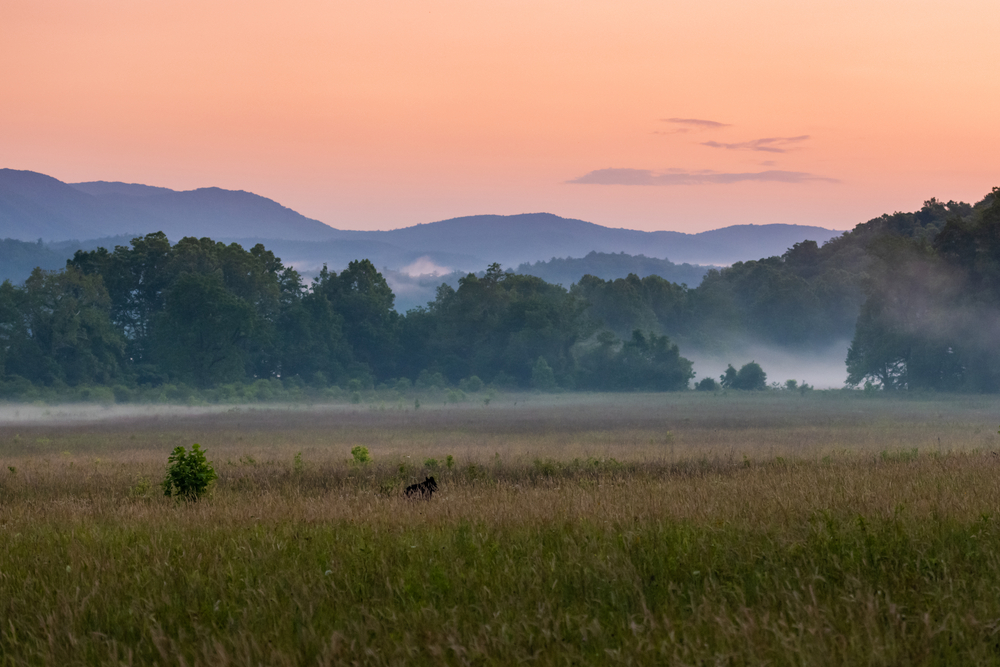The Great Smoky Mountains are known for its diverse plant and animal life as well as remnants of the Southern Appalachian mountain culture. The Smokies are America’s most visited national park. Nestled in the heart of Sevierville, our resort serves as both a gateway and a haven for those seeking to explore the wonders of the Smokies. We’ve taken some of the most frequent questions we’ve gotten from our guests and turned them into a helpful guide.
What is the biggest mountain in the Smokies?
At 6,643 feet, Clingmans Dome is the highest point in the Great Smoky Mountains National Park. It is the highest point in Tennessee, and the third highest mountain east of the Mississippi.
The observation tower on the summit of Clingmans Dome offers spectacular 360° views of the Smokies and beyond for visitors willing to climb the steep half-mile walk to the tower at the top.
Temperatures at the dome can be 10-20 degrees Fahrenheit cooler than in the surrounding lowlands. In fact, the cool, wet conditions on Clingmans Dome’s summit make the spruce-fir forest that grows there a coniferous rainforest.
Pets and bicycles are not permitted on the paved trail to the observation tower, or on any other trails in the area.
What is a fun fact about the Smokies?
The Great Smoky Mountains is home to a large diversity of plants and animals. There are more than 4,000 plants, 140 species of trees, about 65 species of mammals, 200 varieties of birds, 67 native fish species, and more than 80 types of reptiles and amphibians. About 1,500 bears are said to call the Smokies home.
How many days are enough to experience the Smoky Mountains?
Well, we say that it is impossible to do everything there is to do here in the Smokies.
But it is recommended a minimum of 2 to 3 days in the Smoky Mountains to get a decent overview. For your first visit on a short Great Smoky Mountain itinerary, it is suggested touring the Cades Cove valley and driving Newfound Gap Road, with a short waterfall or mountain hike each day.
What food is the Smoky Mountains best known for?
With so many options for dining in this area, it’s hard to know where to go first!
The Smoky Mountains is best known for:
-Fresh Mountain Trout
-Tennessee BBQ
-Corn Chowder
-Cherokee Fry Bread
-Old-Fashioned Taffy and Fudge
-Stone Ground Cornmeal and Grits
-Apple Butter/Dumplings
-Homemade preserves, jellies, honeys, and syrups
And while it’s not food, we are also very well known for our Smoky Mountain moonshine and the many drinks that can be crafted from moonshine.
What are the most common animals in the Great Smoky Mountains National Park?
Though populations are variable, biologists estimate approximately 1,500 bears live in the park, a density of approximately two bears per square mile. Of the 65 other mammal species documented in the park, the white-tailed deer, groundhog, chipmunk, and some squirrel and bat species are the most seen.
There is no guarantee you will see black bears during your visit, but with careful planning, however, you may be able to spot one of these amazing creatures, and from a safe distance.
Every year, thousands of vacationers see black bears in the Great Smoky Mountains National Park, mostly on the Tennessee side.
What are the oldest trees in the Smokies?
1/3 of the trees in the Smokies are over 100 years old but, the oldest tree in the Smokies is a 562-year-old black gum tree. The Smoky Mountains may be old, but you won’t be able to tell as you look out at the picturesque views. This is because the natural beauty has withstood the test of time.
What are a few things NOT to do in the Smokies?
Whether it is something illegal, unfair to our environment and the nature that resides here or things that are just frowned upon, please be mindful.
Things you should not do in the Smokies:
-Do Not Feed the Wildlife
-Do Not Get Too Close to the Animals
-Do Not Litter
-Do Not Start a Hike Too Late
-Don’t Park on the Side of the Road
-Remember to Pack Water on Your Hikes
-Do Not Go Into the Mountains Without a Plan

